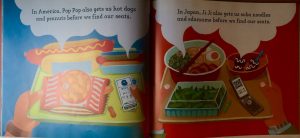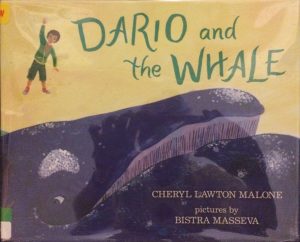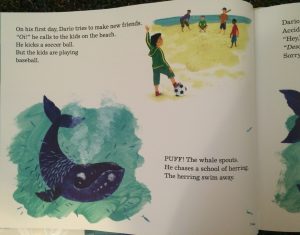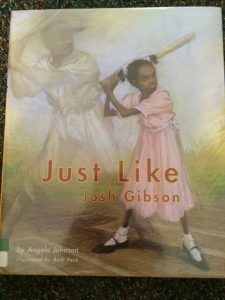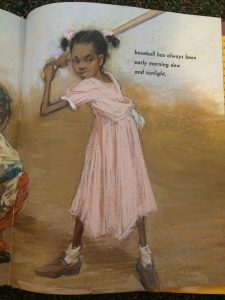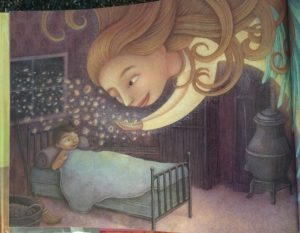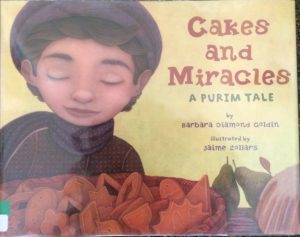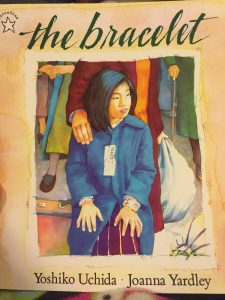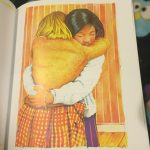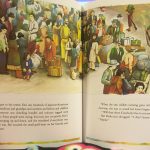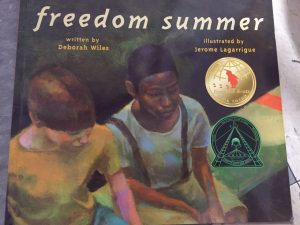
Author: Deborah Wiles
Illustrator: Jerome Lagarrigue
Publishing Information: Aladdin Paperbacks, 2001
Number of Pages: 27
Genre: Historical Fiction, Picture book
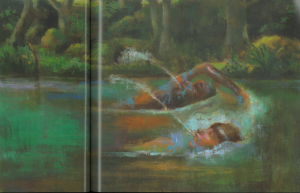

Analysis:
A white boy Joe makes friends with John Henry, the son of the maid of his family. They play together all the time. But there were a lot of laws and rules against black people back then. John Henry cannot get into the store from the front door or swim in the town pool even if he is the finest swimmer. Finally, John Henry decides to use the front door and Joe is right there with him.
The story is based on historical facts. The author grew up in Mobile, Alabama and usually spent her summer with her relatives in Mississippi as she mentioned in the book before she told the story (P. 1). The town pool there was not open to black people. However, when the Civil Rights Act was passed, she witnessed that the town pool was closed. The book serves as a window for children to look back at history and also as a mirror for readers to reflect what is right and what is wrong.
Both of the two characters of this book have strong personalities. John Henry is a nice boy and he would help his mother with her work. In the first half of the book, John Henry does not seem to care whether he could use the front door to the store or whether he could swim in the town pool. He grew up happily playing with Joe and having fun swimming in the creek. But once he realized the difference between rights of white people and rights of himself, he was sad and angry. “John Henry’s eyes fill up with angry tears” (P. 23). The purpose of this book is to expose children to racism. The author tries to convey her point of view that racism is wrong and it can truly hurt feelings of somebody who is so nice. In the book, the author depicts Joe as a sensitive and warmhearted little boy. He would give up going swimming in the town pool just to keep company with John Henry. At the end of the book, Joe and John Henry walked through the front door together. Joe did not ignore the importance of civil rights although he was not directly harmed. He would fight for his friend. He would fight for what is right.
Perceptually, the book uses narrative sentences to tell an engaging story. The whole book uses dark color a lot which conveys a depressing atmosphere. I can find a few bright colors in some of the happy scenes. I found it smart that the illustrator tried to narrow down the difference of Joe and John Henry’s skin colors. Structurally, the text and images are completely separated which helps children to get the story as a whole. Ideologically, this book stresses friendship based on diversity backgrounds. Also, it encourages minorities to stand up for their rights and reminds readers that Civil Rights are universal. It is crucial for everybody to be concerned with it and get involved.

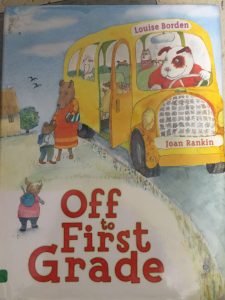
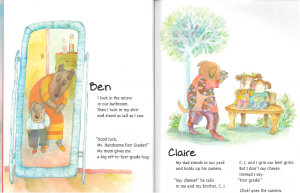
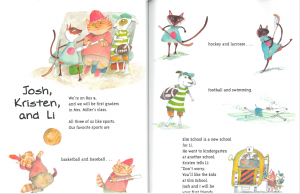
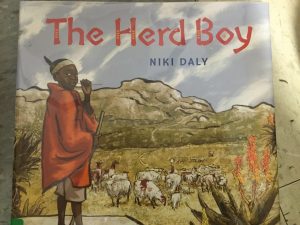
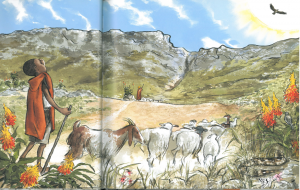
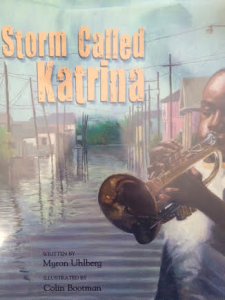
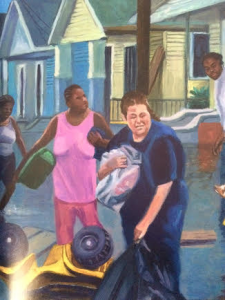
 New Shoes is about a young African American girl, Ella Mae, who goes to the local shoe shop to get new shoes. But since it was during the time of Jim Crow laws Ella Mae was not allowed to try on any of the shoes because of her skin color. She found out that this was something that happened to every African American person, so Ella Mae and her best friend Charlotte decided to do something about it. They started their own shoe store by colleting old shoes and fixing them up to be as good as new. At their shoe shop everyone was able to try on all the shoes they wanted.
New Shoes is about a young African American girl, Ella Mae, who goes to the local shoe shop to get new shoes. But since it was during the time of Jim Crow laws Ella Mae was not allowed to try on any of the shoes because of her skin color. She found out that this was something that happened to every African American person, so Ella Mae and her best friend Charlotte decided to do something about it. They started their own shoe store by colleting old shoes and fixing them up to be as good as new. At their shoe shop everyone was able to try on all the shoes they wanted.
 Take Me Out to The Yakyu is a story about a boy who loves baseball in American and Japan. Through out the story he explains his favorite part about baseball in both countries. I believe that this text would be considered a window because not a lot of people have the opportunity to get the same experiences as the boy in the story so they are unable to connect on a personal level. This text can also be considered a mirror since baseball is a big part of American culture. Although Americans are unable to connect with the Japanese baseball games, they both are the same sport. So if an American or Japanese reader picked up with book they would have the opportunity to connect with it. I really love how this text displays culture. It showed both American and Japanese culture equally and I actually learned some new things about Japanese culture from this book. The images are the main thing that really shows the different culture. On all the left pages there are images of what the boy does at American baseball games and on all the right pages it is an image of what the boy does at Japanese baseball games. So for example on page 10 he is talking about the food he gets at the games. On the left side there is a picture of a hot dog and peanuts, on the right side there is a picture of soba noodles and edamame. The images are full of color and have a lot of detail, and the text mirrors the pictures perfectly which helps describe what is going on in the culture one might not know well. One of my favorite things about the text is that on each page they have American sayings like fastball then on the opposite page they have the Japanese version of that saying. I never expected to learn a couple words in a different language from a children’s book. The text really shows two different cultures and that it is okay to have two different things part of your life. I also think that this text does a good job at showing that activities may not be as different as we think in other cultures. In both countries they are playing the same sport with the same rules. The only difference is the culture that is surrounding the game. I really enjoyed this text and I think it would be a great book to use in the classroom to show that culture can make people different and that it is important to have a good understanding of culture and that its okay to be different.
Take Me Out to The Yakyu is a story about a boy who loves baseball in American and Japan. Through out the story he explains his favorite part about baseball in both countries. I believe that this text would be considered a window because not a lot of people have the opportunity to get the same experiences as the boy in the story so they are unable to connect on a personal level. This text can also be considered a mirror since baseball is a big part of American culture. Although Americans are unable to connect with the Japanese baseball games, they both are the same sport. So if an American or Japanese reader picked up with book they would have the opportunity to connect with it. I really love how this text displays culture. It showed both American and Japanese culture equally and I actually learned some new things about Japanese culture from this book. The images are the main thing that really shows the different culture. On all the left pages there are images of what the boy does at American baseball games and on all the right pages it is an image of what the boy does at Japanese baseball games. So for example on page 10 he is talking about the food he gets at the games. On the left side there is a picture of a hot dog and peanuts, on the right side there is a picture of soba noodles and edamame. The images are full of color and have a lot of detail, and the text mirrors the pictures perfectly which helps describe what is going on in the culture one might not know well. One of my favorite things about the text is that on each page they have American sayings like fastball then on the opposite page they have the Japanese version of that saying. I never expected to learn a couple words in a different language from a children’s book. The text really shows two different cultures and that it is okay to have two different things part of your life. I also think that this text does a good job at showing that activities may not be as different as we think in other cultures. In both countries they are playing the same sport with the same rules. The only difference is the culture that is surrounding the game. I really enjoyed this text and I think it would be a great book to use in the classroom to show that culture can make people different and that it is important to have a good understanding of culture and that its okay to be different.